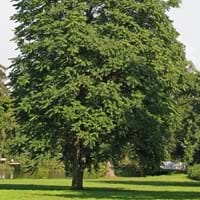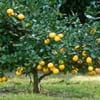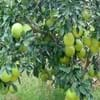Life Span
Perennial
Perennial
Origin
Mexico, Central America
China
Types
Reinikie, Dade, Pike, Suebelle and Golden
Climate
Not Available
Number of Varieties
Not Available
Habitat
Tropical Highlands
Fields, Forest edges, Grassland, Roadsides
USDA Hardiness Zone
8-11
4-8
Sunset Zone
H1, H2, 14, 15, 16, 17, 18, 19, 20, 21, 22, 23, 24
Not Available
Habit
Oval or Rounded
Arching/Fountain-shaped
Flower Color
Light Green, Ivory
Yellow green, Light Green
Flower Color Modifier
Bicolor
Bicolor
Fruit Color
Light Yellow, Yellow green, Light Green
Pink, Light Green, Sienna
Leaf Color in Spring
Green, Dark Green
Green
Leaf Color in Summer
Green, Dark Green
Dark Green
Leaf Color in Fall
Green, Dark Green
Dark Green
Leaf Color in Winter
Light Green
Not Available
Leaf Shape
Alternate
Heart-shaped
Plant Season
Spring, Summer, Fall, Winter
Spring, Summer
Sunlight
Full Sun
Full Sun, Partial Sun, Partial shade
Type of Soil
Loam, Sand
Clay, Loam, Sand
The pH of Soil
Acidic, Neutral
Acidic, Neutral, Alkaline
Soil Drainage
Well drained
Average
Bloom Time
Winter, Late Winter
Spring, Late Spring, Early Summer, Summer
Tolerances
Drought
Pollution, Drought, Salt, Soil Compaction
Where to Plant?
Ground
Ground
How to Plant?
Budding, Grafting, Seedlings, Vegetative
Seedlings
Plant Maintenance
Medium
Medium
Watering Requirements
Do not water frequently, Needs more water during establishment, Water during dry weather
Average Water Needs, Do Not over Water
In Summer
Lots of watering
Drought Tolerant, Average Water
In Spring
Moderate
Drought Tolerant, Average Water
In Winter
Average Water
Drought Tolerant, Average Water
Soil pH
Acidic, Neutral
Acidic, Neutral, Alkaline
Soil Type
Loam, Sand
Clay, Loam, Sand
Soil Drainage Capacity
Well drained
Average
Sun Exposure
Full Sun
Full Sun, Partial Sun, Partial shade
Pruning
Remove damaged leaves, Remove dead branches, Remove dead leaves
Prune in late summer or fall, Prune in late winter, Remove damaged leaves, Remove dead branches, Remove dead leaves
Fertilizers
All-Purpose Liquid Fertilizer
All-Purpose Liquid Fertilizer
Pests and Diseases
Red blotch
Red blotch, Spotted Lanterfly
Plant Tolerance
Drought
Drought, Variety of soil types
Flowers
Insignificant
Insignificant
Flower Petal Number
Single
Single
Fragrant Flower
Not Available
Yes
Fragrant Bark/Stem
No
Yes
Foliage Texture
Medium
Coarse
Foliage Sheen
Matte
Matte
Allergy
drowsiness
allergic reaction, Skin irritation
Aesthetic Uses
Not Used For Aesthetic Purpose
Beautification, Showy Purposes
Beauty Benefits
Not Available
No Beauty Benefits
Environmental Uses
Air purification
Air purification
Medicinal Uses
Anti-carcinogenic effects, Colon Cancer
Anthelmintic, Antispasmodic, Asthma, Astringent
Part of Plant Used
Fruits, Pulp, Seeds
Bark, Root
Other Uses
Used As Food
Used as Ornamental plant, Used for its medicinal properties, Used for woodware
Used As Indoor Plant
No
No
Used As Outdoor Plant
Yes
Yes
Garden Design
Edible, Fruit / Fruit Tree, Shade Trees, Tropical
Shade Trees, Street Trees
Botanical Name
CASIMIROA edulis
AILANTHUS altissima
Common Name
White Sapote
Tree-of-Heaven
In Hindi
White Sapote
कल्पवृक्ष
In German
White Sapote
Baum des Himmels
In French
Sapote blanche
Arbre de paradis
In Spanish
White Sapote
Arbol del Cielo
In Greek
White Sapote
Δέντρο του Ουρανού
In Portuguese
White Sapote
Árvore do céu
In Polish
White Sapote
Drzewo Nieba
In Latin
White Sapote
Lignum de caelo
Phylum
Magnoliophyta
Magnoliophyta
Class
Magnoliopsida
Magnoliopsida
Order
Sapindales
Sapindales
Family
Rutaceae
Simaroubaceae
Genus
Casimiroa
Ailanthus
Clade
Angiosperms, Eudicots, Rosids
Angiosperms, Eudicots, Rosids
Tribe
Not Available
Not Available
Subfamily
Not Applicable
Not Available
Number of Species
Not Available
Season and Care of White Sapote and Tree-of-Heaven
Season and care of White Sapote and Tree-of-Heaven is important to know. While considering everything about White Sapote and Tree-of-Heaven Care, growing season is an essential factor. White Sapote season is Spring, Summer, Fall and Winter and Tree-of-Heaven season is Spring, Summer, Fall and Winter. The type of soil for White Sapote is Loam, Sand and for Tree-of-Heaven is Clay, Loam, Sand while the PH of soil for White Sapote is Acidic, Neutral and for Tree-of-Heaven is Acidic, Neutral, Alkaline.
White Sapote and Tree-of-Heaven Physical Information
White Sapote and Tree-of-Heaven physical information is very important for comparison. White Sapote height is 610.00 cm and width 760.00 cm whereas Tree-of-Heaven height is 1,220.00 cm and width 1,070.00 cm. The color specification of White Sapote and Tree-of-Heaven are as follows:
White Sapote flower color: Light Green and Ivory
White Sapote leaf color: Green and Dark Green
Tree-of-Heaven flower color: Yellow green and Light Green
- Tree-of-Heaven leaf color: Green
Care of White Sapote and Tree-of-Heaven
Care of White Sapote and Tree-of-Heaven include pruning, fertilizers, watering etc. White Sapote pruning is done Remove damaged leaves, Remove dead branches and Remove dead leaves and Tree-of-Heaven pruning is done Prune in late summer or fall, Prune in late winter, Remove damaged leaves, Remove dead branches and Remove dead leaves. In summer White Sapote needs Lots of watering and in winter, it needs Average Water. Whereas, in summer Tree-of-Heaven needs Drought Tolerant, Average Water and in winter, it needs Drought Tolerant, Average Water.





